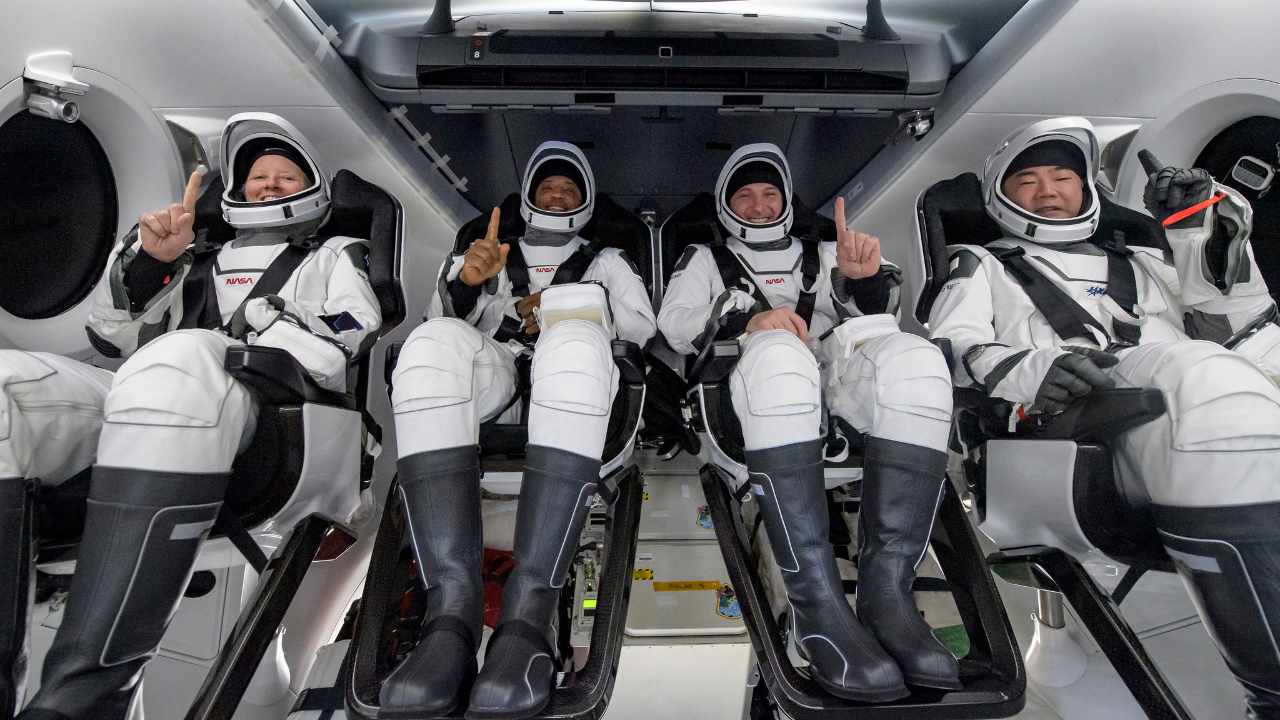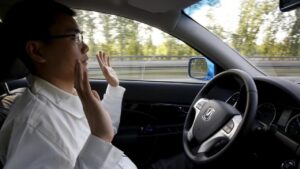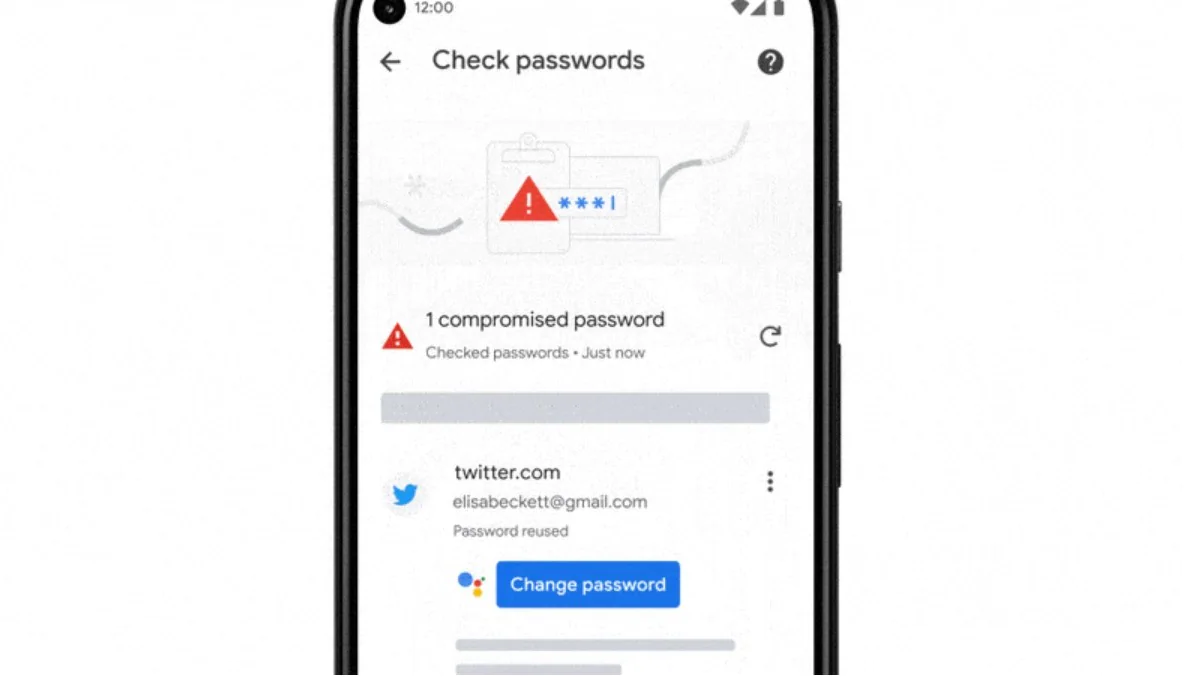The New York TimesMay 03, 2021 12:58:08 IST
In darkness, four astronauts splashed down early Sunday morning in the Gulf of Mexico near Panama City, Florida.
That marked a successful end of a mission for NASA led by a private company, Elon Musk’s SpaceX, to take its astronauts to and from the International Space Station. It was the first of what the space agency calls an operational mission.
Half a year ago, a SpaceX rocket lifted off with the four astronauts — three from NASA, one from Japan’s space agency — who were sitting inside one of the company’s Crew Dragon capsules. On Sunday, the same capsule, named Resilience, safely returned to Earth, just before 3 a.m. Eastern time.

NASA astronauts Shannon Walker, left, Victor Glover, Mike Hopkins, and Japan Aerospace Exploration Agency (JAXA) astronaut Soichi Noguchi, right are seen inside the SpaceX Crew Dragon Resilience spacecraft onboard the SpaceX GO Navigator recovery ship shortly after having landed in the Gulf of Mexico off the coast of Panama City, Florida, Sunday, 2 May 2021. Image credit: NASA/Bill Ingalls
“We welcome you back to planet Earth, and thanks for flying SpaceX,” Michael Heiman, a SpaceX mission control official, told the astronauts. “For those of you enrolled in our frequent flyer program, you have earned 68 million miles on this voyage.”
“Resilience is back on planet Earth, and we’ll take those miles,” replied Mike Hopkins, the NASA astronaut commanding the mission. “Are they transferable?”
The other returning astronauts were Victor Glover and Shannon Walker of NASA and Soichi Noguchi of JAXA, the Japanese space agency.
“All four crew members are in great shape and great spirits and doing really well,” Holly Ridings, NASA’s chief flight director, said at a news conference after the landing.
“All four crew members are doing really well. We got the capsule on board — Resilience on board — SpaceX’s recovery ship without any trouble.” — Holly Ridings, chief flight director, @NASA_Johnson, on tonight’s Crew-1 mission splashdown. pic.twitter.com/koCCG8o1o8
— NASA (@NASA) May 2, 2021
The last time that NASA astronauts splashed down in the nighttime was in 1968, when the three astronauts of Apollo 8, the first to orbit the moon, returned to Earth.
Let’s give NASA’s @SpaceX Crew-1 astronauts a hand!
👏 Welcome home.
In the most fitting fashion, their mission, which certified the return of astronaut launches from the U.S., ended with an equally historic nighttime splashdown at 2:56am ET (06:56 UT): https://t.co/xQUMykAB30 pic.twitter.com/pt3lSHkmlH
— NASA (@NASA) May 2, 2021
Less than a half-hour after landing, the capsule was hoisted out of the water onto a recovery ship.
Minutes later, as SpaceX personnel prepared to open the side hatch of Resilience, Hopkins praised the work of the company. “I’d just like to say, quite frankly, you all are changing the world,” he said.
Heiman returned the compliments. “Your crew is really a tribute to Resilience’s name,” he said. “We wish you all happy reunions with your families and loved ones. And thanks again for flying SpaceX.”
A Long Trip Home
It was a long trip. The astronauts boarded the Crew Dragon, and the hatch closed at 6:26 p.m., but then more than two hours passed before the capsule left as the astronauts checked that there were no air leaks from either the capsule or the space station. Resilience autonomously undocked at 8:35 p.m. and then performed a series of thruster firings to move away from the space station.
SpaceX confirmed that the thruster firings were completed at 10:17 p.m. The capsule then circled the planet until Florida lined up in the correct position for it to splash down in the Gulf of Mexico.
Just before 2 a.m., as it prepared for its return to Earth, the Crew Dragon jettisoned what SpaceX calls the “trunk” section of the spacecraft: the cylindrical compartment below the gumdrop-shaped capsule. The trunk burns up in the atmosphere.
Five minutes after the trunk was detached, the capsule fired its thrusters for about 16 minutes to drop out of orbit.
Once it was low enough in Earth’s atmosphere, parachutes deployed to gently lower the capsule into the sea.
What Water Landings Are Like for Astronauts
Spacecraft can safely return to Earth on water or land.
During the 1960s and 1970s, NASA’s Mercury, Gemini and Apollo capsules all splashed down in the ocean, while Soviet capsules all ended their trips on land. Russia’s current Soyuz capsules continue to make ground landings, as do China’s astronaut-carrying Shenzhou capsules.
NASA returned to water landings Aug. 2, 2020, when the first crew returning to Earth in a SpaceX Crew Dragon capsule — the same one that carried astronauts to the space station last week — splashed down near Pensacola, Florida.
Returning from the free-fall environment of orbit to the normal forces of gravity on Earth is often disorienting for astronauts. A water landing adds the possibility of seasickness.
During a news conference last year, Douglas Hurley, a member of the earlier crew that completed a water landing in the SpaceX capsule, said he had read reports by astronauts from NASA’s Skylab missions, some of the last before him to do water landings. “There was some challenges post-splashdown,” he said. “Folks didn’t feel well, and you know, that is the way it is with a water landing, even if you’re not deconditioned like we’re going to be.”
Hurley acknowledged that vomiting would not be unexpected.
“There are bags if you need them, and we’ll have those handy,” he said. He added that “if that needs to happen, it certainly wouldn’t be the first time that that’s happened in a space vehicle.”
The Astronauts Took the Redeye
U.S. spacecraft have not carried out a nighttime water landing by astronauts since Apollo 8, NASA said.
That crew arrived before dawn Dec. 27, 1968, about 1,000 miles southwest of Hawaii. The New York Times the next day called it “a pinpoint splashdown” and noted that the crew stayed in the capsule for about 90 minutes before it was fished out of the Pacific Ocean by a helicopter team from the USS Yorktown. William Anders, the mission’s lunar module pilot, said over the radio while in the capsule, “Get us out of here; I’m not the sailor on this boat.” (James Lovell, his crew mate, had been a captain in the U.S. Navy.)
SpaceX has rehearsed working at night, and in January it successfully recovered a cargo capsule that splashed down in the Gulf of Mexico, west of Tampa Bay.
Steve Stich, manager for NASA’s Commercial Crew program, said that consistently calm nighttime weather at the splashdown site, ample moonlight and additional factors made landing in the dark advantageous.
“When we weighed all those options, it just looked like this was the best time to come home,” he said on NASA TV on Saturday.
One advantage of a nighttime landing could be that fewer private boats are likely to be around. That was a problem in August when the earlier SpaceX capsule splashed down. More than a dozen boats — one of them flying a Trump campaign flag — converged on the singed capsule, and a few went in for a closer look.
The episode raised concerns among NASA and SpaceX officials about security and safety procedures. If there had been an emergency, NASA officials said, the private boats might have impeded recovery efforts. They added that there could have been poisonous fumes from the capsule that posed a risk to the boaters.
To avert such an outcome, the Coast Guard this time set up an 11.5-mile safety zone around the splashdown site and chased away any interlopers.
Reviewing the Risk from Space Debris
Typically, the risk of space junk hitting a spacecraft going to or from the space station is small. It is generally a pretty short trip — about a day — and a spacecraft like Crew Dragon is pretty small, so it is not a big target for a wayward piece of debris.
But when another group of astronauts, Crew-2, launched last week in a different Crew Dragon, they had a bit of a scare when mission control at SpaceX headquarters in California told them that there was a piece of debris headed their way. They put their spacesuits back on and got back in their seats just in case the spacecraft was hit, which could cause depressurization of the capsule.
Mission control then provided a reassuring update: Further analysis indicated the closest approach of the space debris was not that close after all. Still, as a precaution, the astronauts waited until they were told that the space junk had passed by.
The next day, a NASA spokesperson said the debris had passed by at a distance of 28 miles — not very close at all.
Then, the United States Space Command, which tracks orbiting debris, made a more perplexing update: The piece of debris that supposedly passed by the Crew Dragon never existed at all. A Space Command spokesperson said a review was underway to determine what caused the spurious warning.
Meet the Astronauts
There are four astronauts on Crew-1:
Victor Glover, 45, selected by NASA in 2013 to be an astronaut, was on his first spaceflight. He is also the first Black NASA astronaut to be a member of a space station crew.
Michael S. Hopkins, 52, a colonel in the U.S. Space Force, was the commander for the flight. (Hopkins is also the first member of the newly created U.S. Space Force to go to space.) He was one of nine astronauts selected by NASA in 2009. He had made one previous trip to the International Space Station, in 2013-14, spending 166 days in orbit.
Soichi Noguchi, 56, an astronaut with JAXA, the Japanese space agency, is completing his third trip to space. He was a member of the crew of the space shuttle Discovery in 2005, on the first shuttle launch after the loss of Columbia and its seven astronauts more than two years earlier.
During that visit to the International Space Station, Noguchi made three spacewalks. That included one to test techniques developed to repair damage to the heat tiles on the shuttle similar to what had doomed Columbia when it reentered Earth’s atmosphere. In 2009-10, he spent five months in orbit as a member of the space station crew.
Shannon Walker, 55, has had one previous stint on the space station, in 2010. Walker has a doctoral degree in space physics from Rice University, where she studied how the solar wind interacted with the atmosphere of Venus.
A Birthday Party and Other Hard Work on the Space Station
The space station has been a bit more crowded than usual since another SpaceX Crew Dragon capsule, Endeavour, docked Saturday, April 24. That brought the station’s crew tally to 11, the largest number of astronauts on board since the space shuttles stopped flying (the record for most on board is 13). The four astronauts are leaving seven astronauts behind — three from NASA, two from the Russian space agency Roscosmos, one from the European Space Agency and one from JAXA.
But while they were there, they conducted science experiments, including tissue chips that mimic human organs, and grew radishes and other vegetables. They also performed spacewalks to install equipment on the outside of the space station, including to prepare it for new solar panels.
And just before they left, Glover celebrated his 45th birthday in orbit.
Other astronauts savored their final moments in orbit with images posted on Twitter.
Changes at NASA Since the Astronauts Left Earth
NASA is about to have a new boss.
When Crew-1 blasted off in November, Donald Trump was president and NASA was led by Jim Bridenstine, a former Republican congressman from Oklahoma.
In the time since, President Joe Biden was sworn in and has begun installing his team in the nation’s space agency. He nominated Bill Nelson, the former Democratic senator from Florida, to be the agency’s administrator. On Thursday, the Senate confirmed his appointment by a unanimous voice vote, and Vice President Kamala Harris will swear him in Monday morning.
Steve Jurczyk, who has been serving as acting administrator, will return to his role as associate administrator, the No. 3 position at NASA. Pam Melroy, a former space shuttle commander, has been nominated to be Nelson’s deputy.
The agency also gave SpaceX an important new task this month when it awarded SpaceX a $2.9 billion contract to build the lander that NASA will use to take astronauts back to the surface of the moon. The company will adapt a giant rocket called Starship that SpaceX has been developing for trips to Mars.
Currently, the schedule for the lunar program, Artemis, has astronauts landing on the moon in 2024, a timetable that is widely regarded as unlikely, especially as Congress has not provided as much money for the development of lunar landers as NASA has requested. Although the agency had planned to award contracts to more than one company, it selected only SpaceX. That decision prompted other bidders — Jeff Bezos’ company, Blue Origin and Dynetics of Huntsville, Alabama — to challenge the award. NASA has now instructed SpaceX to stop work on the lunar lander until the Government Accountability Office resolves the protests.
What Is the Crew Dragon?
In the past, NASA led the design and operation of the vehicles for its astronauts, including the first Mercury capsules, the Apollo spacecraft that went to the moon and the space shuttles.
But that was expensive. And since the space shuttles stopped flying in 2011, NASA has had to pay Russia for pricey rides to orbit using the country’s Soyuz rockets.
By choosing a commercial provider, NASA hopes to save money and to spur development of new space businesses, as SpaceX can also sell seats on its Dragon capsule to non-NASA customers.
NASA also selected a second company, Boeing, but Boeing’s offering, the CST-100 Starliner, suffered serious software glitches during an uncrewed test flight in December 2019. A redo of that uncrewed test is to occur later this year, and the first trip with astronauts may not occur until next year.
The Crew Dragon is a gumdrop-shaped capsule — an upgraded version of SpaceX’s original Dragon capsule, which was used to carry cargo to the space station. This particular capsule, named Resilience, was the second model to fly to orbit during its trip in November.
The spacecraft is roughly comparable in size to the Apollo capsule that took NASA astronauts to the moon in the 1960s and 1970s. SpaceX said the Crew Dragon can be configured with seating for seven people. But for the NASA trips, there will be just four astronauts at a time.
The four astronauts who launched to orbit in November during the Crew-1 mission are still at the space station. Those four astronauts and the Crew-1 capsule are scheduled to return to Earth on April 28.
The Crew Dragon is far more advanced than what NASA astronauts sat in 50 years ago and even sleeker than the space shuttles. Fancy touch screens replace the buttons and joysticks that were used in earlier spacecraft.
If you think you are able to fly a Crew Dragon yourself, SpaceX provided a web version of the system that the NASA astronauts would use if they needed to override the spacecraft’s automated systems. Some YouTube users have helpfully explained how to actually complete the docking.
Who Else Will SpaceX Carry to Space Soon?
Not everyone that flies on SpaceX’s Crew Dragon will be a professional astronaut. Jared Isaacman, a 38-year-old billionaire, has purchased a launch that is to take off as soon as September. Three other people will join him on what is to be the first all-civilian trip to orbit, which he calls Inspiration4.
In assembling the crew, Isaacman sought to bring together a group of people more diverse than have traditionally become astronauts. The other three people are Hayley Arceneaux, who is a cancer survivor and who, at 30, is to become the youngest American to go to space; Chris Sembroski, a longtime space enthusiast who works for Lockheed Martin; and Sian Proctor, a community college professor who was close to being selected as a NASA astronaut in 2009.
One of NASA’s goals in turning to commercial companies was to spur new businesses in space. “I do think that this was really our goal when we set up commercial crew,” said Kathy Lueders, the associate administrator of NASA’s human exploration and operations directorate.
She said NASA set up the contracts with SpaceX and Boeing so that the companies could also sell rides to other customers. “Our goal is one day that everyone’s a space person,” she said. “And so this is just an exciting first step for that.”
For NASA, SpaceX is also building a new Crew Dragon capsule for the next group of astronauts headed to the space station, a mission currently scheduled to launch in October.
Two companies, Axiom Space and Space Adventures, said they also have agreements with SpaceX to take tourists to orbit. The Axiom trip, which will take its four passengers for a stay at the space station, will launch no earlier than January.
Kenneth Chang c.2021 The New York Times Company










